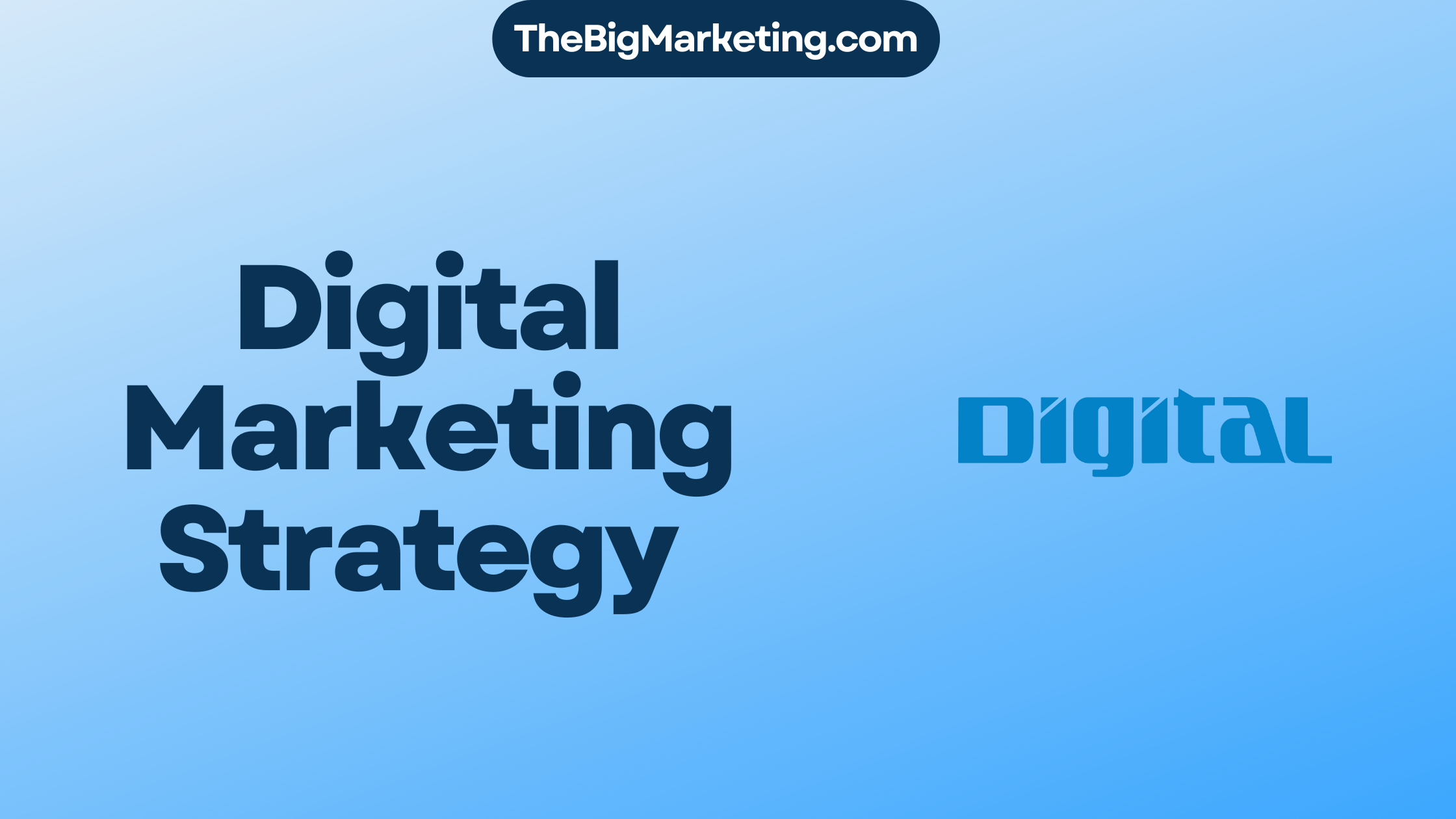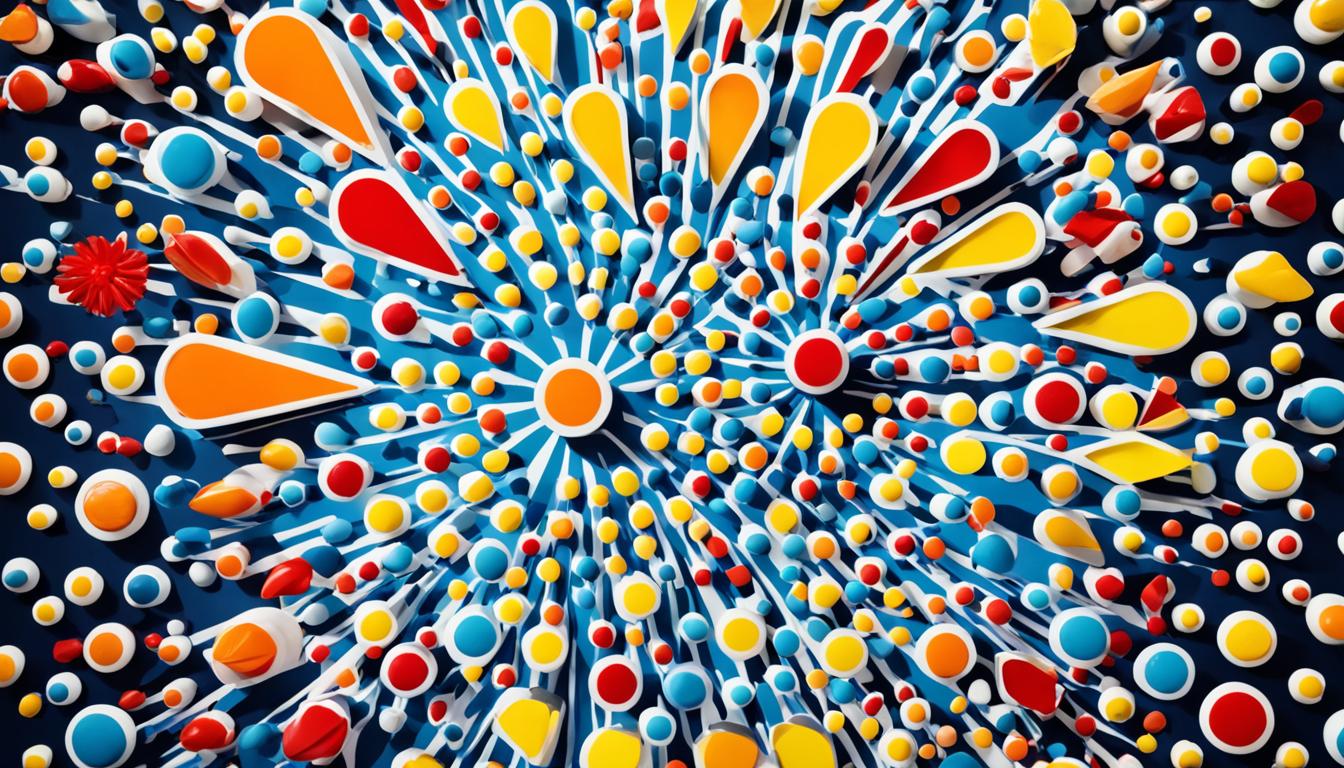As a marketing professional, it’s important to understand the distinct roles of a Marketing Designer and a Graphic Designer. While both play a crucial role in brand development and strategy, they have different focuses and responsibilities. In this guide, we will explore the differences between the two and their impact on marketing and design.
Key Takeaways:
- Marketing design and graphic design have different focuses and responsibilities.
- Graphic design is visual communication through various mediums.
- Marketing involves selling, promoting, and driving sales through various channels.
- Graphic design and marketing work together to create cohesive visuals and convey the brand’s messaging.
- Hiring the right designer depends on your specific needs and goals.
Understanding Graphic Design
Graphic design is a powerful tool for visual communication, enabling businesses to convey their ideas and values effectively. It encompasses a wide range of design elements and materials, including brochure layouts, printed flyers, social media images, ad images, logos, and website branding.
Graphic designers play a crucial role in ensuring that these visuals align with the brand’s identity and guidelines. By creating cohesive and attractive designs, they help businesses establish a strong brand identity and make a lasting impression on their target audience.
Whether it’s designing captivating visuals for printed materials or creating eye-catching social media images and advertising imagery, graphic designers are skilled in using design principles to captivate and engage viewers.
Visual elements are essential in creating a strong brand identity and conveying messages efficiently. They capture attention and provide a visual representation of a company’s values, products, and services.
Through graphic design, businesses can communicate their unique selling propositions, establish a consistent look and feel, and differentiate themselves from competitors. By following design guidelines and integrating brand elements, graphic designers contribute to the overall coherence, professionalism, and impact of a company’s marketing materials.
What is Marketing?
Marketing is the act of selling and promoting a business or its products/services. It involves tasks like conducting audience research, creating and sharing content, planning and launching advertisements, and ultimately driving sales and engagement. Marketing is essential for a business’s growth, and as it becomes more digital-oriented, graphic design plays a crucial role in supporting these marketing efforts.
Effective marketing requires a deep understanding of the target audience and their needs and preferences. Audience research helps businesses identify their target market and tailor their marketing strategies accordingly. By analyzing demographic data, consumer behavior, and market trends, marketers can develop insights that inform their marketing decisions.
Content creation is another vital aspect of marketing. Through compelling and informative content, businesses can engage their target audience and build brand visibility. Content can take various forms, including blog posts, social media posts, videos, infographics, and whitepapers.
Advertisements are a key component of marketing as they help businesses reach a wider audience. Whether through traditional outlets such as print and television or digital channels like social media and search engines, advertisements generate awareness and drive sales. Designing visually appealing and attention-grabbing advertisements is crucial for capturing the audience’s attention.
Graphic design plays a fundamental role in marketing by visually communicating the brand’s messages and values. It encompasses creating logos, website design, branding materials, packaging, and more. With an eye for aesthetics and an understanding of design principles, graphic designers create visuals that resonate with the target audience, strengthen brand identity, and drive conversions.
The Partnership between Graphic Design and Marketing
Graphic design and marketing are mutually dependent disciplines that work together to effectively promote a brand. By collaborating, graphic designers and marketing teams can ensure that the visuals they create align with the brand’s messaging, target audience, and overall marketing strategy. Visuals play a critical role in attracting the ideal customer and conveying the intended message, making cohesive visuals essential for successful marketing campaigns.
Graphic designers understand the importance of a deep understanding of the marketing goals, target audience, and brand identity. By having this knowledge, they can create designs that not only capture attention but also support the marketing strategy’s objectives. Whether it’s designing eye-catching advertisements, engaging social media images, or compelling website visuals, graphic designers enhance the brand’s messaging and impact.
When graphic design and marketing come together, the result is a powerful synergy that drives conversions and connects with the target audience. Cohesive visuals strengthen the brand’s identity and messaging consistency across various marketing channels, leading to increased brand recognition and customer loyalty. By leveraging their design expertise and collaborating closely with the marketing team, graphic designers can create visuals that align perfectly with the broader marketing strategy.
To better understand the impact of the partnership between graphic design and marketing, consider the following aspects:
The Design Impact on Marketing Strategy
Design plays a pivotal role in shaping the overall marketing strategy. Captivating visuals are crucial in grabbing the attention of the target audience and igniting their curiosity. By aligning the design with the brand’s messaging, values, and aesthetic, marketing campaigns become more compelling, relatable, and memorable. Through thoughtful design choices, graphic designers can enhance the marketing strategy’s effectiveness and maximize its impact on the target audience.
The Influence of Design on Messaging
Visual elements greatly contribute to the messaging conveyed by a brand. Graphic designers have the skills to translate brand messages into compelling visuals that resonate with the target audience. By using a combination of typography, color palettes, imagery, and layout techniques, designers can effectively communicate the values, personality, and unique selling points of the brand. This alignment between design and messaging ensures that the brand’s intended message is effectively delivered to the target audience.
The Importance of Cohesive Visuals
Consistency in visual branding is crucial for creating a memorable and recognizable brand identity. Graphic designers work closely with marketing teams to develop a visual language that conveys the brand’s essence consistently. This includes maintaining harmonious color schemes, typography, and design elements across different platforms and marketing materials. Cohesive visuals create a unified brand experience, which instills trust, familiarity, and loyalty among the target audience, increasing the likelihood of conversions.
| Benefits of the Partnership between Graphic Design and Marketing | Effectiveness | Collaboration |
|---|---|---|
| 1. Enhanced brand recognition and recall | The visually appealing design captures attention and makes the brand memorable. | Graphic designers and marketers collaborate closely, aligning design with marketing goals. |
| 2. Increased customer engagement | Visually compelling designs pique curiosity and encourage audience interaction. | Joint efforts ensure that design elements effectively support the marketing strategy. |
| 3. Improved targeting and conversions | Design tailored to the target audience increases the likelihood of conversions. | Graphic designers and marketers work together to understand and reach the target audience effectively. |
| 4. Consistent brand identity | Cohesive visuals establish a strong and recognizable brand identity. | Graphic designers ensure that design elements align with the brand’s messaging and values. |
Key Distinctions between Marketing Design and Graphic Design
While marketing design and graphic design share some areas of overlap, they are distinct in their focus and approach. Marketing design emphasizes strategy, understanding the target audience, and aligning visuals with overall marketing goals. On the other hand, graphic design puts more emphasis on aesthetics and the execution of visuals. Both disciplines contribute to brand identity, but marketing design ensures that visuals effectively convey the intended message to the target audience.
Marketing Design
- Strategy-driven approach
- Focus on understanding the target audience
- Alignment of visuals with marketing goals
- Consideration of brand identity
Graphic Design
- Aesthetic-driven approach
- Emphasis on visual execution
- Creation of visually appealing designs
- Implementation of brand guidelines
Marketing design and graphic design complement each other in delivering cohesive and impactful visual communication. Understanding the distinctions between these disciplines is crucial for businesses to effectively leverage both marketing and design strategies in order to establish a strong brand identity and engage their target audience.
To visually represent the key distinctions between marketing design and graphic design, refer to the table below:
| Marketing Design | Graphic Design |
|---|---|
| Strategy-driven | Aesthetic-driven |
| Focus on understanding the target audience | Emphasis on visual execution |
| Alignment with overall marketing goals | Creation of visually appealing designs |
| Considers brand identity | Implements brand guidelines |
As seen in the table and image above, marketing design and graphic design have distinct focuses and contributions. Marketing design ensures that visuals are strategically aligned with marketing goals and brand identity, while graphic design focuses on creating visually appealing designs that implement brand guidelines. The collaboration between these two disciplines is essential for effective brand communication and achieving marketing objectives.
Hiring a Graphic Designer vs a Brand Designer
When it comes to hiring a creative professional for your business, understanding your specific needs and goals is crucial. Two roles that often come up in discussions are graphic designers and brand designers. While both play important roles in executing visual elements, they have distinct focuses and skillsets. Making the right choice between hiring a graphic designer or a brand designer depends on your specific requirements.
If you already have a well-defined brand strategy and brand identity, hiring a graphic designer can be a great option. Graphic designers have expertise in executing a vision and creating aesthetically pleasing designs that align with your existing brand guidelines. Whether it’s designing marketing collaterals, developing website graphics, or crafting social media visuals, a graphic designer can bring your brand’s visual identity to life.
However, if you are looking to develop a brand strategy, establish your brand identity, and create a comprehensive branding strategy, hiring a brand designer is the way to go. Brand designers are skilled in understanding your brand’s mission, values, and target audience. They can provide guidance and collaborate with you to develop a strong brand identity that resonates with your ideal customers.
Affinio Patisserie is an example of a company that understood the importance of branding strategy. They decided to hire a brand designer to revamp their visual identity and create a cohesive branding strategy. By working closely with the designer, they were able to develop a brand that reflects their values and appeals to their target audience.
Graphic Designer vs Brand Designer: A Comparison
| Graphic Designer | Brand Designer |
|---|---|
| Executes a vision | Develops brand strategy |
| Focuses on aesthetics | Focuses on brand identity |
| Works within existing brand guidelines | Creates brand guidelines |
| Collaborates with marketing teams | Collaborates with clients |
Collaboration between graphic designers, brand designers, and marketing teams is essential to achieve a cohesive and effective brand strategy. By understanding the differences between these roles, businesses can make informed decisions when it comes to hiring the right professionals to support their marketing and design needs.
Successful creative collaboration can bring great results. When hiring a designer, whether it’s a graphic designer or a brand designer, fostering open communication and collaboration enables them to understand your vision and create designs that align with your branding strategy.
Next, we’ll explore the specific roles and responsibilities of a graphic designer and a brand designer.
The Role of a Graphic Designer
A graphic designer plays a vital role in creating visually appealing designs that effectively communicate information and align with brand guidelines. Their primary focus is to execute a given brief and bring it to life through the power of aesthetics.
Utilizing their expertise in design principles, a graphic designer crafts visuals that captivate the audience and convey messages with impact. They have a keen eye for detail, ensuring that every element of the design is carefully considered to achieve the desired outcome.
Collaboration is an essential aspect of a graphic designer’s role. They work closely with brand designers and marketers, aligning their designs with the overall brand strategy. By understanding the client’s vision and objectives, they can create designs that resonate with the target audience and effectively communicate the desired message.
Adherence to brand guidelines is paramount for a graphic designer. They ensure that each design element aligns with the brand’s visual identity, including colors, fonts, and imagery. This consistency reinforces brand recognition and helps to establish a cohesive brand experience across various marketing channels.
In summary, a graphic designer combines their artistic skills, knowledge of design principles, and collaborative mindset to execute visually stunning designs that effectively communicate messages and align with brand guidelines.

| Key Responsibilities: | Skills and Expertise: |
|---|---|
|
|
The Role of a Brand Designer
A brand designer plays a crucial role in developing a brand’s identity and creating a cohesive brand strategy. Their work involves close collaboration with clients to gain an in-depth understanding of their goals, target audience, and market positioning. By aligning these insights, a brand designer can help create brand guidelines that define the brand’s visual language and ensure consistency across all brand visuals.
The brand designer’s primary focus is on developing a brand identity that resonates with the ideal customers. They use their expertise in design principles and market research to craft visuals that effectively communicate the brand’s vision and message. From logos and typography to color palettes and imagery, every element is carefully curated to evoke the desired emotions and perceptions.
In order to achieve a successful brand identity, collaboration and communication play a vital role. The brand designer works closely with clients and other stakeholders to ensure that the brand’s vision and message are accurately represented in the visuals. They actively seek feedback and iterate on designs to create a final product that aligns with the client’s goals and objectives.
Furthermore, brand designers play a critical role in maintaining consistency across all brand visuals. They ensure that the brand’s identity is consistently applied to various touchpoints, including websites, social media profiles, print materials, and packaging. This consistency helps build brand recognition and instills trust in the minds of the audience.
By combining artistic creativity with strategic thinking, a brand designer brings a unique perspective to the table. They understand the importance of brand strategy and how it influences the perception and success of a business. Their expertise in creating visually appealing and impactful designs helps businesses differentiate themselves in a crowded market.
| Key Responsibilities | Skills & Qualifications |
|---|---|
|
|
The Relationship between Brand Strategists and Brand Designers
Brand strategists and brand designers play interconnected roles in the development and execution of a comprehensive brand development strategy. While brand strategists focus on creating a strong foundation for a business by defining its goals, identifying the target audience, and positioning it in the market, brand designers take this information and translate it into visually engaging elements that represent the brand’s identity and resonate with its ideal customers.
Brand strategists provide valuable insights and guidance to brand designers, helping them understand the brand’s core values, messaging, and positioning. With this knowledge, brand designers can then visualize the brand’s identity through various media and channels, including logos, color schemes, typography, and imagery, ensuring consistency and cohesiveness in all brand visuals.
The collaborative relationship between brand strategists and brand designers is essential for creating a powerful and memorable brand presence. By combining their expertise, they can align the visual representation of the brand with its strategic goals, effectively communicating its essence to the target audience.
Together, brand strategists and brand designers work towards crafting a compelling brand experience that captures the attention and loyalty of customers. They understand the importance of creating visuals that not only attract but also convey the brand’s values and personality effectively. This collaboration between strategy and design significantly contributes to the success and growth of a brand.
Comparison of Roles and Responsibilities
| Brand Strategists | Brand Designers |
|---|---|
| Define brand goals | Create visual elements |
| Identify target audience | Translate brand strategy into visuals |
| Position brand in the market | Ensure consistency in brand visuals |
| Develop brand messaging | Create logos, typography, and imagery |
| Guide overall brand strategy | Convey brand values and personality |
The collaboration between brand strategists and brand designers fosters the creation of visually compelling brand visuals that capture the essence of the brand. Together, they bring strategic thinking and design expertise to optimize the brand’s impact and communicate its unique value proposition effectively.
Conclusion
Both graphic designers and brand designers play crucial roles in the development and marketing of a brand. While graphic designers focus on creating visually appealing designs, brand designers are responsible for crafting a cohesive brand strategy and identity. The collaboration between marketing and design is essential for effective visual communication, which drives brand awareness and engagement.
Understanding the distinctions between graphic designers and brand designers allows businesses to make informed decisions about hiring the right professionals to support their marketing and design efforts. Graphic designers excel in executing designs that align with a brand’s aesthetic vision, while brand designers bring strategic thinking to develop a comprehensive brand identity that resonates with the target audience.
By harnessing the collective expertise of marketing and design professionals, businesses can create compelling visuals that captivate their audience and deliver impactful messages. The seamless collaboration between marketing and design fosters brand development by ensuring consistency, relevancy, and effectiveness in visual communication. It is through this collaboration that brands can establish themselves in the market and forge meaningful connections with their customers.
In summary, the partnership between marketing and design is a powerful force in building successful brands. As businesses strive to make their mark in today’s competitive landscape, the collaboration between graphic designers and brand designers becomes indispensable. Through their combined efforts, businesses can create visually compelling brand experiences and effectively communicate their unique value proposition to their target audience.
FAQ
What is the difference between a Marketing Designer and a Graphic Designer?
Marketing designers focus on strategy, understanding the target audience, and aligning visuals with marketing goals. Graphic designers focus more on the aesthetics and execution of visuals.
What does graphic design entail?
Graphic design involves using visuals to communicate ideas and values, including brochure layouts, printed materials, social media images, ad imagery, logos, and website branding.
Why is marketing important?
Marketing involves selling and promoting a business or its products/services. It includes tasks like audience research, creating and sharing content, planning and launching advertisements, and driving sales and engagement.
How do graphic design and marketing work together?
Graphic design and marketing collaborate to ensure that visuals align with brand messaging, target audience, and marketing strategy. Visuals play a crucial role in attracting customers and conveying messages effectively.
What are the key distinctions between marketing design and graphic design?
Marketing design focuses on strategy, understanding the target audience, and aligning visuals with marketing goals. Graphic design focuses more on aesthetics and executing visuals effectively.
Should I hire a graphic designer or a brand designer?
It depends on your needs and goals. If you have a well-defined brand identity, a graphic designer can execute your vision. If you need help with brand strategy and messaging, a brand designer can provide guidance and collaborate on a comprehensive branding strategy.
What is the role of a graphic designer?
A graphic designer’s primary focus is on creating aesthetically pleasing designs based on a given brief. They execute the vision and effectively communicate information through visuals.
What is the role of a brand designer?
A brand designer plays a strategic role in developing a brand’s identity and creating a cohesive brand strategy. They collaborate with clients to understand goals, target audience, and market positioning.
How do brand strategists and brand designers work together?
Brand strategists create a strong foundation for a business, defining goals, target audience, and market positioning. Brand designers translate this information into visual elements that represent the brand’s identity and resonate with ideal customers.
How do marketing and design collaborate in brand development?
Marketing and design collaboration is crucial for effective visual communication and driving brand awareness and engagement. Understanding the distinctions between roles helps businesses make informed decisions about hiring professionals to support marketing and design efforts.



